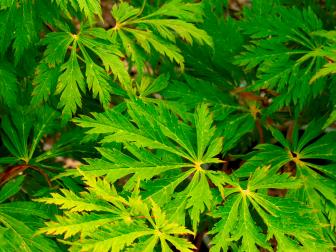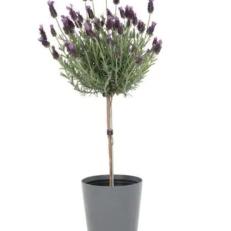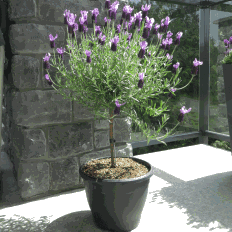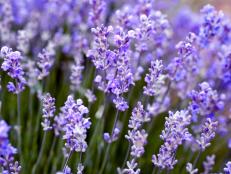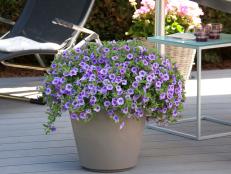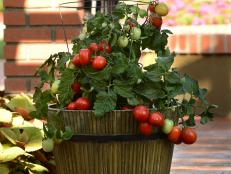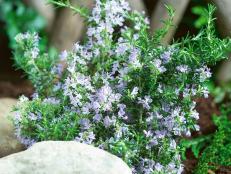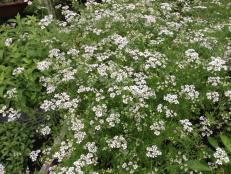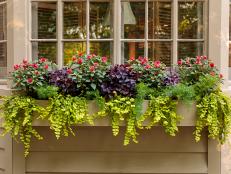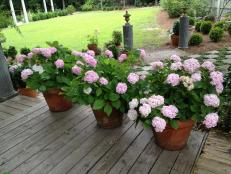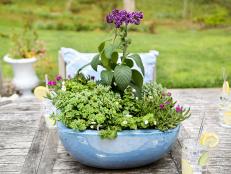Lavender Trees
Set your sights on growing a lavender tree or topiary.
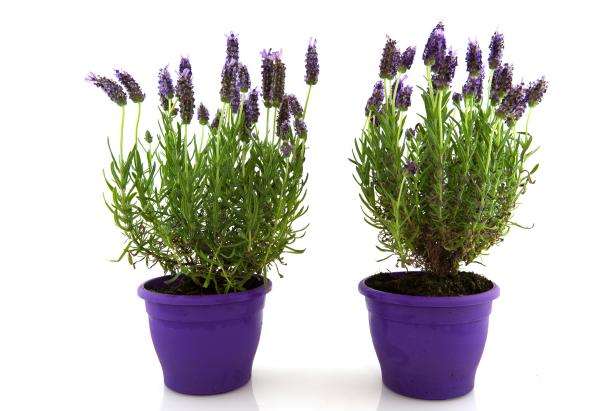
Ivonne Wierink/Shutterstock.com
Prune carefully and you can grow a lavender tree or topiary in a container.
Give your patio an elegant touch with a lavender tree in a container. Lavender trees go by a host of other names, including lavender topiary or lavender standard. They typically have a tall, bare wooden stem topped with a ball of gray-green lavender leaves. A lavender tree is beautiful in bloom, and with its fresh-smelling leaves, it’s equally wonderful without flowers.
12 Great Patio Trees 12 Photos
Here are ideas for little trees that won't take over your yard.
Growing a lavender tree is similar to growing lavender in containers. The most important things to consider are container size, soil and water. Start with container size. You can purchase a lavender tree at a reasonable price in a variety of pot sizes, from 2 inches all the way up to a gallon nursery pot.
When growing a lavender tree, place it in a container that’s only 1 to 2 inches larger than the root ball. Lavender trees, like lavender bushes, like to be in tight quarters when they’re tucked into containers. Avoid having a too-large pot that places a large amount of soil around plant roots. Soil that’s not occupied with roots is more prone to stay wet and induce root rot.
A lavender tree tends to be top-heavy. It’s a good idea to slip your right-size planting pot inside a larger cache pot. Choose an ornamental or plain pot based on your taste and where you’ll display the lavender tree. Use a cache pot manufactured from a heavy material, like concrete or stone, or tuck bricks into the bottom of lighter pots to weigh them down.
Planting Lavender Tree
Plant your lavender tree into soil that drains well. Start with a standard commercial bagged mix for containers and add a tablespoon of agricultural lime to shift soil toward the alkaline blend that lavender craves. If you have perlite or builder’s sand on hand, mix a handful of that into the soil to sharpen the drainage. You might want to add a few inches of limestone gravel to the bottom of pots, but only if space permits.
Buy Lavender Trees
Lavender Tree Care
Do not overwater a lavender tree. Lavender in containers is prone to overwatering. Your job is to keep soil consistently moist—don’t let it dry out too much and don’t keep it overly wet. Aim to let soil dry to a depth of 1 inch between waterings.
Prune your lavender tree frequently, giving it a basic clipping to maintain the shape. Keep an eye on the underside of your topiary form especially, because stems tend to dangle down as they grow. Use scissors or ikebana-type shears to make pruning easier. After plants flower, snip all flower stems and prune growing tips back a few inches—but don’t cut into woody parts of stems.
Keep your lavender tree outdoors year-round if the lavender species is hardy in your growing zone. In colder regions, bring your lavender tree indoors for winter. Place it in a bright southern window. Give it quarter turn weekly to maintain even growth. Clip stem ends as they become lanky.







